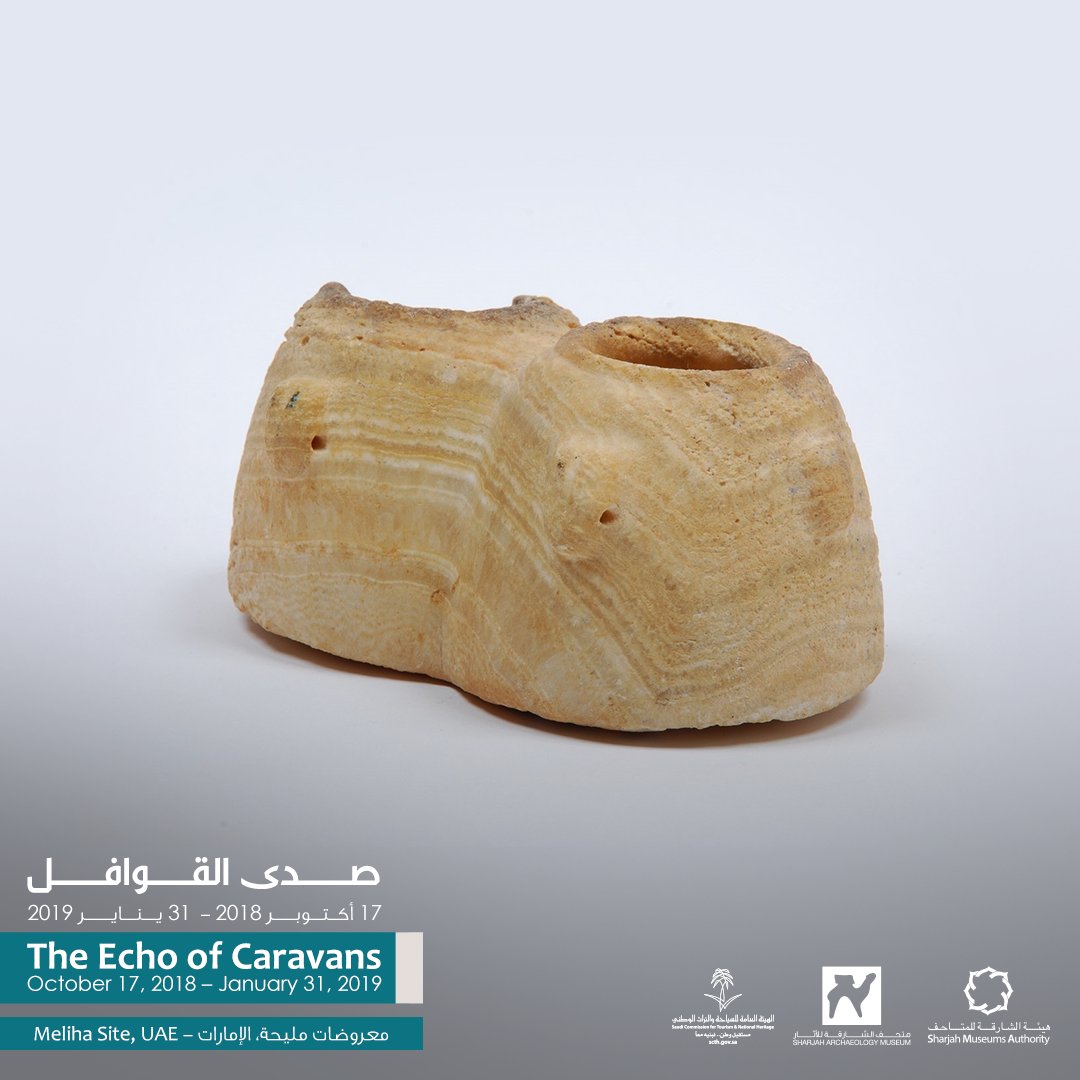0




















| Thumbs Up |
| Received: 29,829 Given: 24,541 |

By Ahmad al-Jallad
This video is 6 years old, but it's a good start to have some understanding of some of the archaeological findings in Saudi Arabia:More (and let’s hashtag it this time) #airportepigraphy. A new Thamudic D text from the area of Yathrib (Medina) containing a heretofore unattested formula: “I am Tbn and may our companions be protected” - oddly Hismaic in phrasing...
`n tbn w ḥmn `śy’-n
1) predicate-subject syntax. ḥmn could possibly be a participle ... ḥamīn, from حـ مـ ي.
2) `śy’ = أشياع , common in Safaitic and Hismaic, and attested for the first time in ThamD.
3) the entire text feels very Hismaic and may suggest Contacts with the Nabataean realm. This wouldn’t be unexpected at all given that we occasionally find ThamD texts in Jordan, and that Nab inscriptions are attested @ Yathrib. Now for some doubt: ThamD isn’t fully deciphered and I wonder if E = ح is completely correct ...
One diff between my reading and that of the gentleman whose tweet I linked is the intepretation of the H glyph, which is now beyond a doubt alif rather than /z/. Other glyphs were misread in the tweetio princeps as well.
https://twitter.com/Safaitic/status/1198621041695875072


















| Thumbs Up |
| Received: 29,829 Given: 24,541 |

Archaeological findings of UAE:
Displayed at #SharjahArchaeologyMuseum, this beautiful ivory comb was a fashion accessory around 2000 BC. #Sharjah
#40YearsOfArchaeology is the first-ever collaboration between the French Archaeological Mission and the Archaeological departments/authorities of #AbuDhabi, #Sharjah, #UmmAlQuwain, #RasAlKhaimah, #Fujairah. Visit #SharjahArchaeologyMuseum to see what historic artifacts were found
Although they were miles apart, Mleiha (UAE) and Najran (KSA) shared many similarities in the past - like these two alabaster conjoined bowls used to preserve ointment and perfumes. Learn more at #SMACaravans in #SharjahArchaeologyMuseum. #SharjahMuseums @scthKSA



















| Thumbs Up |
| Received: 29,829 Given: 24,541 |

By Ahmad al-Jallad:
#Airportepigraphy: 3 beautiful lines of Nabataean from the area of al-Ulā. The hand is “classical” so before the 4th c. CE. They are typical Nabataean Aramaic graffiti, containing a wish for security/well-being for their authors. I’ll read and explain them below.
šlm ‘bdmnkw br ‘yd l-‘lm
šlm ḥrtw br ‘bdmn{w}tw
May Abdomanko son of ‘īdo be secure for all time
May Harith son of Abdo-Manōto be secure
Commentary:
The inscription has an alif and another letter I can’t make out on my phone. Perhaps `y = īy = Yea!
Abdo-Manko: a Nabataean basilophoric name - servant of Mank = Malichus = a Nabataean king. Mank is a peculiar form of the Nabataean dialect development from Malk “king”. The pronunciation “malik” reflects a later loan from Aramaic.
l-‘lm = for all time, l “for” plus ‘ālam.
‘bdmnwtw = servant of Manawat, the goddess of fate, QCT mnwh, Classical Arabic manātun, And late Nabataean Arabic manōto.
Notice that the dāls have a dot above them to distinguish them from the rê, like the Yazid inscrip.
This is an important genealogical link between Nabataean and later Arabic scripts.
Paahhh! small correction: i forgot to transcribe the wawation in the name ‘yd — it should be ‘ydw (which I vocalized as such).
https://twitter.com/Safaitic/status/1200845326896246784


















| Thumbs Up |
| Received: 29,829 Given: 24,541 |

Al-Lat was one the national gods and goddess of the ancient Arabs for thousands of years alongside her siblings(Al-Manat and Al-Uzza), Hubal, Dushara and etc that was synonymous to other Semitic goddesses like Asherah.
Al-Lat, Damascus, Syria, 1st century AD:
Al-Lat, Palmyra from the temple of Al-Lat before it was destroyed by ISIS scum:
Her temple:
Al-Lat and her two sisters, Hatra, Iraq:
Al-Lat from the ancient city of Bosra:
The consort of Al-Lat, the lion of Al-Lat:
Al-Lat and a elderly man, Hatra, Iraq:



















| Thumbs Up |
| Received: 29,829 Given: 24,541 |

How did the pre-Islamic Arabian nomads of the Harrah conceptualize death and memorialize the lost? A long overdue paper in lecture form (Princeton TRI lunchtime lecture):
https://www.kaltura.com/index.php/ex.../embed/dynamic


















| Thumbs Up |
| Received: 29,829 Given: 24,541 |

More archaeological findings in Arabia and Iraq.
Standing male figure (44.7 cm H). This unusual south Arabian statue, likely devotional representation of high social standing individual, display external Egyptian artistic influence channeled in a local style. 4th-1st century BC, Yemen.
Lihyanite sculpture from Dedan, the inscription reads:
1: s¹ḫm/bn/t–
2: m/h- ṣnʿ/ʿbd
3: zd/h- ṣwġ
the first part is translated as the following: "s¹ḫm son of Taim the artisan.." while the second part is not clear, it could be read as "slave of Zaid the metalsmith" or as suggested by Suleiman Al-Theeb, it could mean "ʿbd-Zaid the designer". Thus the object was initially modeled by ʿbd-Zaid and then sculptured by s¹ḫm son of Taim.
A final highlight from the Islamic galleries @britishmuseum: small finds from Samarra in #Iraq, capital of the Abbasid caliphate from 836-892. Among the greatest Islamic archaeological sites in the world, it was built to house the Turkish slave soldiers of the caliph al-Mu‘tasim



















| Thumbs Up |
| Received: 29,829 Given: 24,541 |

More archaeological findings in Arabia.
Larger than life-sized head of colossal statue (4th-2nd c. BC). Likely a representation of Lihyanite monarch. From Tayma, Saudi Arabia.
"Hey you..come closer"
Figurative funeral stele composed of two panels, the upper panel depict a seated woman in front of an altar that appears to be carrying an incense burner. The lower panel shows the deceased standing before the same woman in the upper panel (a goddess?).
Qatabanian bone amulet with carvings of three attacking predators (leopards?) and two female busts. Neither date or provenance is specified. From Bayḥān Museum in Yemen.
Hellenistically fashioned and redly painted female bust made of terracotta, 3rd-2nd cent. BC. From Bahrain (Tylos period).
Golden discs (c. 1st–3rd century AD) with applied glass plaster and decorative rosette motifs, these vividly colored discs used to separate various parts of a necklace. From Qaryat al-Faw, Saudi Arabia.



















| Thumbs Up |
| Received: 29,829 Given: 24,541 |

For the Persians here by Ahmad al-Jallad:
"Adversity was widespread the year of Caesar and the Persians" states this #Safaitic inscription (Mafraq Museum 14), carved over 16 centuries ago. While the modern term for "Persians"/"Iranians" in Arabic is فرس in the Safaitic inscriptions they were called maḏay = Medes, Μῆδοι
The Old Arabic is:
taʾammara haś-śāneʾ sanata qayṣar wa-ham-maḏay.
Depending on when the Safaitic inscriptions were carved, maḏay could refer to the Parthians or the Sassanids. Perhaps the shift to the term fāris reflected a political change in Iran. It shows up first in Arabic in the 4th c. CE, in the Namarah inscription. Still, there are a few enigmatic references to the "Persians" in Safaitic that seem to defy the conventional chronology of the inscriptions, thought to terminate in the 4th c. CE C 4448 is dated to "the year the Persians waged war upon the Romans at Boṣrā (S. Syria)" (sanata ḥāraba ham-maḏay ʾāla-rūm be-boṣrāy). At 1st impression, this would seem to refer to the Sassanian conquest of Syria in 613 CE, a date far too late for Safaitic (AFAWK).
Other, earlier conflicts have been suggested but its laconic language makes this an unsolvable puzzle. Another inscription appears to refer the same event: SIJ 79: marada ʿal-rūm sanata ʾataya ham-maḏay ḅoṣrāya "He rebelled against Rome the year the Persians came to Bostra"
We do not know how our Safaitic writers played into these conflicts -- it is clear that many Arabic-speaking tribesmen from the Ḥarrah served in Roman auxiliary units, but SIJ 79 seems to suggest that some nomads took this conflict as an opportunity to rebel against Rome.
Biblio:
C = Ryckmans, G. Corpus Inscriptionum Semiticarum: Pars Quinta, Inscriptiones Saracenicae Continens: Tomus I, Fasciculus I, Inscriptiones Safaiticae. Paris: E Reipublicae Typographeo, 1950–1951
SIJ = Winnett, F.V. Safaitic Inscriptions from Jordan. Toronto 1957.
Al-Mafraq Museum:http://arabianepigraphicnotes.org/jo...ice-and-museum
On one possible interpretation of the Persians coming to Bostra, see: Knauf, E.A. Als die Meder nach Bosra Kamen. Zeitschrift der Deutschen Morgenländischen Gesellschaft 134, 1984: 219-225.
https://twitter.com/Safaitic/status/1213832321083805696


















| Thumbs Up |
| Received: 29,829 Given: 24,541 |

Two female sandstone statues (fertility goddess/es?), 4000-3000 BC. From Bisha, Asir, Saudi Arabia.
Fragment of a cloth. Adorned with a male portrait, with thick eyebrows and bushy beard. 3rd BCE-3rd CE. Mada'in Saleh, Saudi Arabia.

















| Thumbs Up |
| Received: 558 Given: 522 |

Toppo900 how do you think about Qaysi/Yamani difference among Arabs? Many sources claim division of Arabs to three groups: true Arabs (Aribi of Assyrian cuneiform), Southerners (descendants of Sabians/Himyarites from Yemen) and Northerners (Nabaiti/Nabateans and Qidri/Qedarites of Assyrian cuneiform, descendants of Hapiru - Amorites from Babylonia, expelled by Kassites. These Hapiru were common ancestors of Jews and Northern Arabs).
There are currently 1 users browsing this thread. (0 members and 1 guests)
 Latin America
Latin America
 Portugal
Portugal
Bookmarks